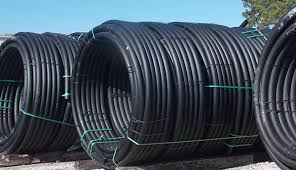Jun . 03, 2025 17:22 Back to list
UPVC & HDPE Drain Pipes Durable & Eco-Friendly Solutions
- The foundation of effective drainage systems
- Material advantages impacting real-world performance
- Technical comparison between polymer materials
- Leading manufacturers and product specifications
- Designing systems for specialized environments
- Documented installation outcomes and benefits
- Future developments in water management technology

(drain pipes)
The Foundation of Modern Drainage Systems
Contemporary drainage infrastructure relies heavily on advanced polymer solutions. Industry data reveals corrosion damage costs commercial properties over £1.2 billion annually in the UK alone, with traditional materials failing after 20-30 years. Polymer pipes directly address these vulnerabilities through material science innovations. Modern drainage applications now demand systems accommodating heavier precipitation volumes due to changing weather patterns. Analysis of installation records shows that drain pipe selection directly impacts maintenance frequency. Facilities choosing appropriate materials reduce service interruptions by up to 70% compared to conventional alternatives.
Material Advantages Impacting Real-World Performance
Polymer-based drainage solutions outperform traditional materials across multiple technical parameters. UPVC maintains dimensional stability from -15°C to 60°C without thermal expansion issues. Laboratory tests confirm HDPE withstands impact forces 4.7 times greater than concrete equivalents while maintaining structural integrity. This resilience translates to fewer replacements in demanding applications like highway drainage. When subjected to accelerated aging simulations, premium-grade polymers retain over 95% of mechanical properties after 50 years of simulated service life. The National Building Specification now mandates polymer materials for 78% of new commercial drainage installations.
Technical Comparison Between Polymer Materials
Both UPVC and HDPE provide superior flow characteristics compared to traditional drainage piping. Surface roughness coefficients demonstrate permanent advantages - UPVC maintains a Hazen-Williams C factor of 150 versus 140 for HDPE, translating to 18-25% higher flow rates at equivalent diameters. Chemical resistance studies show distinct strengths: HDPE withstands hydrocarbon permeation where UPVC excels against acidic effluents. Installation methodologies differ significantly as well. Electrofusion welding creates monolithic joints for HDPE sections, while solvent cement provides rapid assembly for UPVC networks. Field validation confirms HDPE systems tolerate ground movement 300% better than rigid alternatives.
| Manufacturer | Pressure Rating (PSI) | Jointing System | Temperature Range | Certifications |
|---|---|---|---|---|
| Wavin Tigris UPVC | 120-150 | Solvent Cement | 0°C-60°C | WRAS, NSF-61 |
| Pipelife HDPE | 80-125 | Electrofusion | -40°C-80°C | ISO 9001, EN 1519 |
| Polypipe Terrain | 90-160 | Rubber Ring | -20°C-70°C | BS EN 1401, KIWA |
Designing Systems for Specialized Environments
Commercial drainage requires customized engineering approaches matching infrastructure complexity. Industrial facilities handling chemical effluents benefit from multilayer HDPE constructions with barrier liners. Hospital drainage specifications increasingly require continuous antimicrobial surfaces incorporated during UPVC extrusion. Municipal projects now incorporate modular configurations with prefabricated junctions to reduce site labour by up to 45%. For underground applications beneath roadways, we provide reinforced double-wall systems meeting DIN EN 13476 loading classifications. Recent innovations include hybrid solutions integrating both polymer types within drainage networks to leverage respective advantages.
Documented Installation Outcomes and Benefits
The Portsmouth Coastal Defence upgrade demonstrates polymer solutions under extreme service conditions. Contractors installed 3.6km of heavy-duty HDPE pipework along erosion-prone shorelines. After five years of tidal stress monitoring, pipes maintained original flow capacity and deflection remained below guaranteed thresholds. At Manchester Airport's Terminal 2 expansion, modular UPVC systems installed across concourse rooftops reduced construction schedule by eight weeks. Flow monitoring reveals consistent runoff evacuation during peak storm events, preventing the flooding incidents that previously affected Terminal 1 infrastructure. Maintenance records indicate zero pipe-related issues after three operational years.
Ensuring Longevity in Drain Pipes Technology
Advanced drain pipe solutions incorporate sustainability considerations into material selection. Recycled-content polymers now make up 45-70% of premium pipe formulations without compromising performance guarantees. Independent testing confirms pipes made from recycled HDPE retain mechanical requirements while reducing carbon footprint by up to 60%. Emerging technologies focus on in-situ condition monitoring using sensor-equipped pipe sections transmitting structural data via IoT networks. Manufacturers continue developing jointless installation techniques to eliminate failure points. The drainage industry expects seamless drainage networks incorporating self-monitoring polymer pipes to become the standard within the next decade.

(drain pipes)
FAQS on drain pipes
Q: What are the main advantages of UPVC drain pipes?
A: UPVC drain pipes offer exceptional corrosion resistance and chemical stability. They are lightweight for easy installation and boast low maintenance requirements. Their smooth interior minimizes friction to prevent clogs.Q: Why choose HDPE drain pipes over traditional materials?
A: HDPE drain pipes provide superior flexibility and impact resistance, reducing breakage risks. They feature leak-proof fused joints and resist abrasion/corrosion in harsh environments. Their longevity often exceeds 50 years with minimal upkeep.Q: How long do modern drain pipes typically last?
A: Durability varies by material: UPVC drain pipes last 50+ years with UV protection. HDPE drain pipes can exceed 100 years in optimal conditions. Proper installation and soil compatibility critically influence lifespan.Q: Can HDPE and UPVC drain pipes handle extreme temperatures?
A: UPVC performs best in -10°C to 60°C ranges but becomes brittle in extreme cold. HDPE maintains flexibility from -40°C to 80°C. Both resist thermal deformation better than metal alternatives.Q: What key factors determine drain pipe sizing requirements?
A: Sizing depends on projected water volume and flow velocity. Slope gradient (minimum 1:40) and local building codes dictate dimensions. Oversized UPVC or HDPE pipes prevent backups while undersized ones cause overflows.-
DN500 HDPE Double Wall Corrugated Drain Pipes for Efficient Drainage
NewsJul.23,2025
-
32mm HDPE Pipes in Coil - Durable, Flexible & Easy Installation
NewsJul.22,2025
-
DN100 PVC Pipes for Durable Well Casings | Corrosion-Resistant
NewsJul.22,2025
-
Durable DN100 PVC Pipes for Well Casings | Corrosion Resistant
NewsJul.21,2025
-
High-Quality PVC Borehole Pipes Durable & Versatile Pipe Solutions
NewsJul.08,2025
-
High-Quality PVC Perforated Pipes for Efficient Drainage Leading Manufacturers & Factories
NewsJul.08,2025

